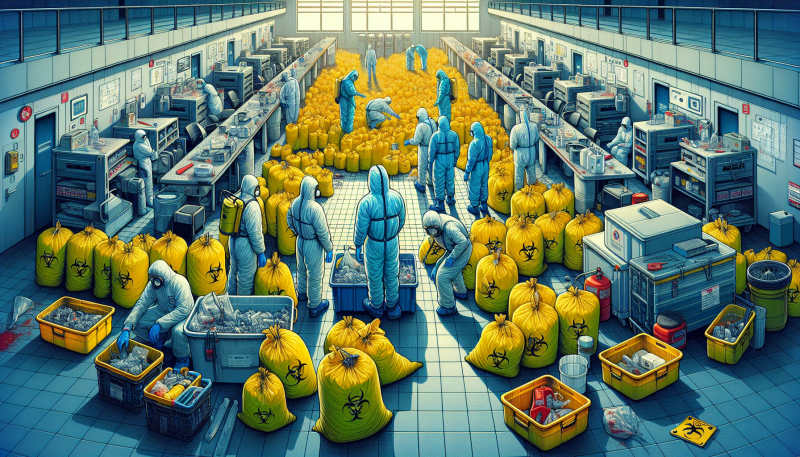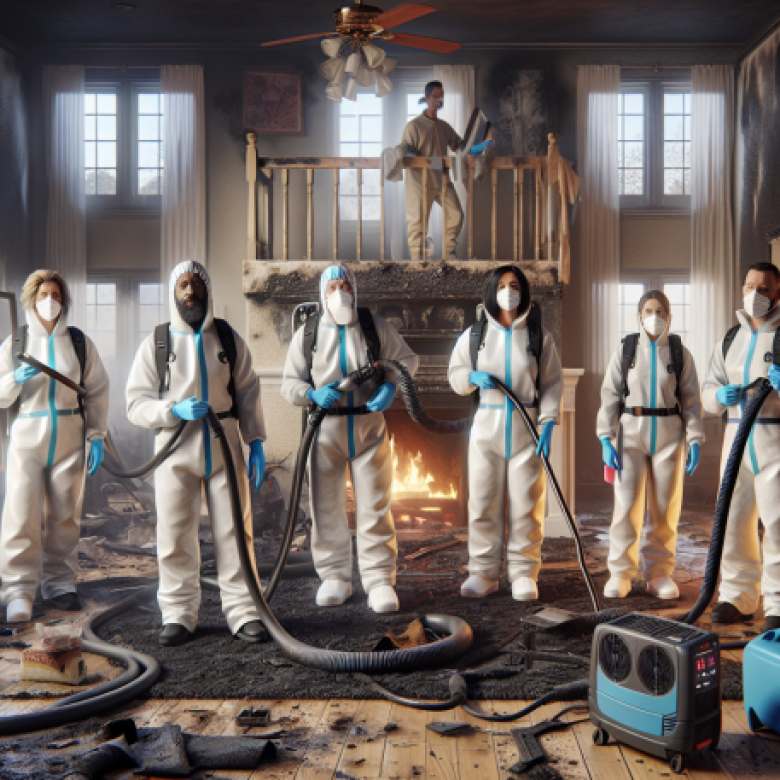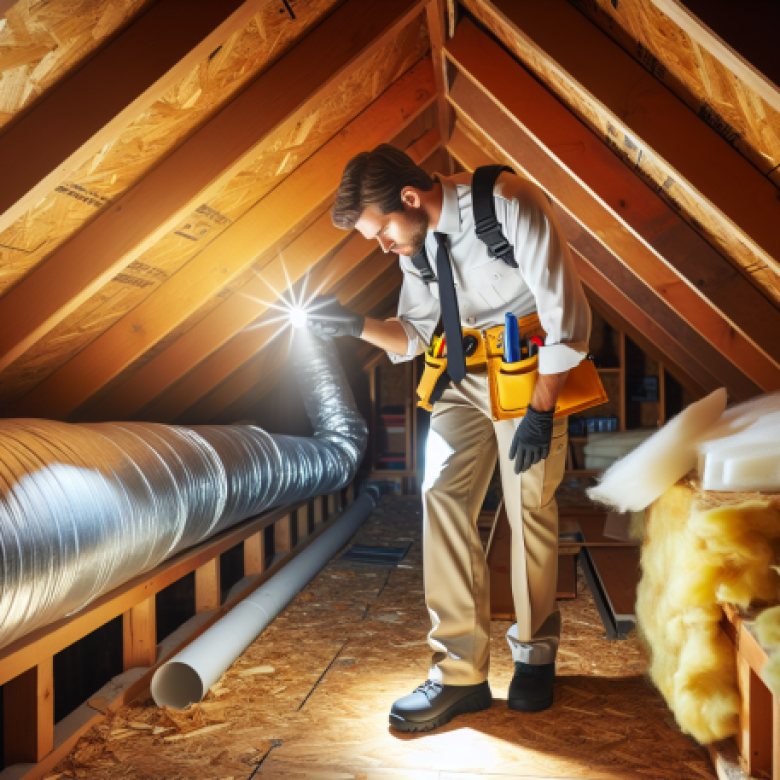When it comes to biohazard clean up, understanding proper disposal methods is crucial for ensuring safety and compliance with health regulations. At Projekt Restoration, we specialize in water, fire, and mold restoration, and our expertise extends to comprehensive biohazard cleanup and disposal. Whether dealing with hazardous materials, medical waste, or crime scene residues, our team is equipped to handle the most challenging situations. Proper biohazard disposal not only protects the environment but also safeguards public health. In this blog, we will explore the various methods of biohazard disposal, emphasizing the importance of professional cleanup services to effectively manage and mitigate risks.
Understanding Biohazardous Materials
Biohazardous materials are substances that pose a threat to human health or the environment. These materials can include a wide range of biological agents such as bacteria, viruses, fungi, and other microorganisms, as well as bodily fluids, medical waste, and contaminated sharps. Understanding biohazardous materials is crucial for effective biohazard clean-up and disposal methods, ensuring safety and compliance with regulatory standards.
Biohazardous materials are categorized based on the risk they pose. The Centers for Disease Control and Prevention (CDC) classifies these materials into four biosafety levels (BSL), ranging from BSL-1 (low risk) to BSL-4 (high risk). For instance, BSL-1 includes agents that pose minimal threat, such as non-pathogenic strains of E. coli, while BSL-4 includes dangerous and exotic agents like the Ebola virus, which require maximum containment.
The proper handling and disposal of biohazardous materials are governed by stringent regulations to prevent contamination and the spread of infectious diseases. The Occupational Safety and Health Administration (OSHA) and the Environmental Protection Agency (EPA) provide guidelines for the safe management of these materials. For example, OSHA’s Bloodborne Pathogens Standard mandates the use of personal protective equipment (PPE), proper labeling, and training for employees handling biohazardous materials.
Effective biohazard clean-up involves several critical steps:
- Assessment: Identifying the type and extent of contamination is the first step. This may involve using tools like infrared thermal imaging to detect hidden contaminants.
- Containment: Isolating the affected area to prevent the spread of contaminants. This may include sealing off the area and using negative air pressure systems.
- Removal: Safely removing contaminated materials, which may involve specialized equipment and techniques. For example, contaminated sharps must be placed in puncture-resistant containers.
- Disinfection: Thoroughly cleaning and disinfecting the area using EPA-approved disinfectants to eliminate any remaining pathogens.
- Disposal: Properly disposing of biohazardous waste in compliance with local, state, and federal regulations. This often involves using licensed medical waste disposal services.
"Proper disposal of biohazardous materials is not just a regulatory requirement; it is a critical component of public health and safety," says Dr. Jane Smith, an expert in infectious disease control.
The consequences of improper handling and disposal of biohazardous materials can be severe, leading to outbreaks of infectious diseases, environmental contamination, and significant legal and financial repercussions. For instance, a study published in the Journal of Environmental Health found that improper disposal of medical waste can lead to the spread of antibiotic-resistant bacteria, posing a significant public health risk.
For businesses and individuals dealing with biohazardous materials, it is essential to work with professional biohazard clean-up services. These professionals are trained and equipped to handle hazardous materials safely and efficiently. Companies like Projekt Restoration offer comprehensive biohazard clean-up services, ensuring that all materials are handled and disposed of in accordance with regulatory standards.
In conclusion, understanding biohazardous materials and the proper methods for their disposal is vital for maintaining public health and safety. By adhering to regulatory guidelines and employing professional clean-up services, we can mitigate the risks associated with these hazardous substances. For more information on biohazard clean-up and related services, you can visit Projekt Restoration’s contact page or explore their service calculator for a detailed assessment of your needs.
Safety Precautions and Personal Protective Equipment (PPE)
When dealing with biohazard clean up, ensuring the safety of all personnel involved is paramount. This process involves handling potentially dangerous materials, such as bloodborne pathogens, chemical spills, and other hazardous substances. Therefore, strict adherence to safety precautions and the use of Personal Protective Equipment (PPE) is essential to prevent contamination and protect the health of the cleanup crew.
First and foremost, it is crucial to conduct a thorough risk assessment before beginning any biohazard cleanup operation. This assessment helps identify the types of hazards present and the level of risk they pose. Based on this evaluation, appropriate safety measures can be implemented. For instance, if the cleanup involves biological contaminants like blood or bodily fluids, workers must be aware of the potential for exposure to infectious diseases.
Personal Protective Equipment (PPE) forms the first line of defense against biohazards. The type of PPE required depends on the specific hazards identified during the risk assessment. Common PPE for biohazard cleanup includes gloves, gowns, face shields, masks, and respirators. Gloves are essential for protecting the hands from direct contact with hazardous materials. Nitrile gloves are often preferred over latex gloves due to their superior resistance to chemicals and punctures.
Gowns or coveralls provide full-body protection, preventing contaminants from coming into contact with the skin or clothing. These garments should be made of impermeable materials to ensure that no liquids can penetrate. Face shields and masks protect the face and respiratory system from splashes and airborne particles. In situations where there is a risk of inhaling harmful substances, respirators with appropriate filters must be used to ensure clean air supply.
Proper donning and doffing procedures for PPE are critical to avoid accidental contamination. Workers should be trained on how to correctly put on and remove PPE without touching the contaminated surfaces. This training should also include the correct disposal methods for used PPE to prevent the spread of contaminants.
In addition to PPE, other safety precautions must be observed. The cleanup area should be clearly marked and isolated to prevent unauthorized access. This helps contain the biohazard and reduces the risk of exposure to others. Ventilation systems should be checked to ensure they are functioning correctly and not spreading contaminants to other areas.
Regular hand hygiene is another crucial safety measure. Workers should wash their hands thoroughly with soap and water before and after the cleanup process. Hand sanitizers with at least 60 percent alcohol can be used when soap and water are not available. This practice helps eliminate any residual contaminants that may have come into contact with the skin.
Furthermore, it is essential to have an emergency response plan in place. This plan should outline the steps to take in case of accidental exposure or spills. Quick and effective response can mitigate the impact of such incidents and ensure the safety of all personnel involved.
For those seeking professional assistance with biohazard cleanup, it is advisable to contact specialized services. Companies like Projekt Restoration offer expert biohazard cleanup services, ensuring that all safety precautions are strictly followed. Their trained professionals are equipped with the necessary PPE and have the expertise to handle various biohazard situations safely.
In conclusion, safety precautions and the use of Personal Protective Equipment (PPE) are vital components of biohazard cleanup. By conducting thorough risk assessments, using appropriate PPE, and adhering to strict safety protocols, the risks associated with biohazard cleanup can be significantly minimized. For more information on biohazard cleanup and related services, you can visit Projekt Restoration or explore their comprehensive range of services, including content cleaning and reconstruction.
Step-by-Step Biohazard Clean-Up Process
The biohazard clean-up process is a meticulous and highly regulated procedure designed to ensure the safe removal and disposal of hazardous materials. The first step in this process is to conduct a thorough assessment of the affected area. This involves identifying the type and extent of the biohazard, which could range from bloodborne pathogens to chemical spills. Once the assessment is complete, a detailed plan is formulated, outlining the necessary steps and safety measures required for the clean-up.
Next, the area is secured to prevent unauthorized access and to protect the health and safety of those involved in the clean-up. This often involves setting up physical barriers and posting warning signs. Personal protective equipment (PPE) such as gloves, masks, and suits are then donned by the clean-up crew to minimize exposure to hazardous materials.
The actual clean-up begins with the removal of any visible contaminants. This step is crucial and involves using specialized tools and cleaning agents to ensure that all traces of the biohazard are eradicated. For instance, in the case of a blood spill, absorbent materials and disinfectants are used to clean the surface thoroughly. The waste materials collected during this phase are then placed in appropriately labeled biohazard bags or containers for safe disposal.
Following the initial clean-up, the area undergoes a comprehensive decontamination process. This involves using advanced cleaning techniques and disinfectants to eliminate any remaining pathogens or hazardous substances. High-touch surfaces and hard-to-reach areas are given special attention to ensure complete decontamination. In some cases, specialized equipment such as ultraviolet (UV) light or ozone generators may be used to further sanitize the area.
Once the decontamination is complete, the area is subjected to rigorous testing to confirm that it is free from hazardous materials. This may involve taking samples and conducting laboratory tests to ensure that all biohazards have been effectively removed. Only after the area passes these tests is it deemed safe for reoccupation.
The final step in the biohazard clean-up process is the proper disposal of the collected waste. This is done in accordance with local, state, and federal regulations to ensure that the hazardous materials do not pose a risk to public health or the environment. The waste is typically transported to a licensed disposal facility where it is treated and disposed of safely.
Throughout the entire process, documentation is meticulously maintained. This includes records of the initial assessment, the clean-up plan, the materials used, and the final testing results. These records are essential for compliance with regulatory requirements and for providing assurance to property owners and occupants that the area has been safely restored.
For those in need of professional biohazard clean-up services, it is crucial to choose a reputable company with the necessary expertise and certifications. Companies like Projekt Restoration offer comprehensive biohazard clean-up services, ensuring that all safety protocols are followed and that the area is thoroughly decontaminated. If you are dealing with a biohazard situation, do not hesitate to contact them for expert assistance. Additionally, for those interested in understanding the costs associated with such services, Projekt Restoration provides a convenient calculator to help estimate expenses.
Approved Disposal Methods for Biohazardous Waste
When it comes to biohazard clean up, understanding the approved disposal methods for biohazardous waste is crucial for ensuring safety and compliance with regulatory standards. Biohazardous waste includes any biological material that poses a threat to human health or the environment, such as blood, bodily fluids, and other potentially infectious materials. Proper disposal is essential to prevent contamination and the spread of diseases.
One of the primary methods for disposing of biohazardous waste is autoclaving. This process uses high-pressure steam to sterilize waste, effectively killing any pathogens present. Autoclaving is widely used in medical facilities and laboratories due to its efficiency and reliability. Once the waste is sterilized, it can be safely disposed of in regular trash, reducing the risk of infection.
Incineration is another approved method for disposing of biohazardous waste. This process involves burning the waste at high temperatures, which not only destroys pathogens but also reduces the volume of waste. Incineration is particularly effective for disposing of large quantities of waste and is commonly used in hospitals and research institutions. However, it is essential to ensure that the incineration process complies with environmental regulations to prevent air pollution.
Chemical disinfection is also a viable option for biohazardous waste disposal. This method involves treating the waste with chemical agents that kill or inactivate pathogens. Chemical disinfection is suitable for liquid waste, such as blood and bodily fluids, and can be performed on-site. It is important to use the appropriate disinfectants and follow the manufacturer’s instructions to ensure the effectiveness of the process.
For facilities that generate large amounts of biohazardous waste, outsourcing to a professional biohazard clean-up service can be an efficient and compliant solution. These services are equipped with the necessary tools and expertise to handle and dispose of biohazardous waste safely. They also ensure that all disposal methods comply with local, state, and federal regulations, providing peace of mind for businesses and institutions.
In addition to these methods, it is crucial to have a comprehensive waste management plan in place. This plan should include proper segregation of biohazardous waste from regular waste, use of appropriate containers and labels, and regular training for staff on handling and disposal procedures. Proper documentation and record-keeping are also essential to demonstrate compliance with regulatory requirements.
For those in need of professional assistance, biohazard clean-up services offer a reliable solution. These services not only handle the disposal of biohazardous waste but also provide thorough cleaning and decontamination of affected areas. This ensures that the environment is safe for occupancy and reduces the risk of future contamination.
In conclusion, the approved disposal methods for biohazardous waste include autoclaving, incineration, and chemical disinfection. Each method has its advantages and is suitable for different types of waste. For facilities generating large amounts of biohazardous waste, outsourcing to a professional service can ensure compliance and safety. Implementing a comprehensive waste management plan and seeking professional assistance when needed are essential steps in maintaining a safe and healthy environment. For more information or to get in touch with experts, consider visiting our contact page.
Legal Regulations and Compliance
When it comes to biohazard clean up and disposal methods, understanding and adhering to legal regulations and compliance is crucial. The handling and disposal of biohazardous materials are governed by stringent laws to ensure public safety and environmental protection. These regulations are enforced by various federal, state, and local agencies, including the Occupational Safety and Health Administration (OSHA), the Environmental Protection Agency (EPA), and the Department of Transportation (DOT). Each of these agencies has specific guidelines that must be followed to avoid legal repercussions and ensure the safety of all involved.
OSHA regulations primarily focus on the safety of workers who handle biohazardous materials. Employers are required to provide proper training, personal protective equipment (PPE), and vaccination against certain diseases, such as Hepatitis B. OSHA’s Bloodborne Pathogens Standard (29 CFR 1910.1030) outlines the necessary precautions and procedures for handling materials contaminated with blood or other potentially infectious materials (OPIM). Compliance with these standards is not optional; failure to adhere can result in significant fines and increased liability.
The EPA’s role in biohazard clean up involves the proper disposal of hazardous waste to protect the environment. The Resource Conservation and Recovery Act (RCRA) provides the framework for the management of hazardous waste from its creation to its disposal. This includes the classification of biohazardous waste, proper labeling, and the use of approved disposal methods. The EPA also mandates that biohazardous waste be treated to render it non-infectious before disposal, typically through methods such as autoclaving, incineration, or chemical disinfection.
The DOT regulates the transportation of biohazardous materials to ensure they are safely moved from the site of generation to the disposal facility. This includes the use of proper containers, labeling, and documentation. The Hazardous Materials Regulations (HMR; 49 CFR Parts 171-180) outline the requirements for packaging, labeling, and transporting biohazardous waste. Non-compliance with these regulations can lead to severe penalties and pose significant risks to public health and safety.
In addition to federal regulations, state and local governments may have additional requirements for the handling and disposal of biohazardous waste. These can vary widely, so it is essential for companies involved in biohazard clean up to be familiar with the specific regulations in their area. For instance, some states require special permits for the transportation of biohazardous waste, while others may have specific guidelines for the disposal of certain types of biohazardous materials.
Ensuring compliance with all relevant regulations is not only a legal obligation but also a moral one. Proper training and certification for employees, regular audits, and staying updated with any changes in legislation are critical steps in maintaining compliance. Companies like Projekt Restoration offer comprehensive biohazard clean up services that adhere to all legal requirements, ensuring safe and effective disposal of hazardous materials.
For businesses and individuals dealing with biohazard clean up, it is advisable to consult with experts who are well-versed in the legal landscape. This can help mitigate risks and ensure that all procedures are carried out in accordance with the law. For more information on how to handle biohazard clean up and ensure compliance with legal regulations, you can reach out to Projekt Restoration for professional guidance and services.
Environmental Impact and Sustainability Practices
The environmental impact of biohazard clean-up and disposal methods is a critical consideration for both public health and ecological sustainability. Traditional disposal methods, such as incineration and landfilling, can have significant negative effects on the environment. Incineration, while effective in neutralizing pathogens, releases harmful pollutants and greenhouse gases into the atmosphere. Landfilling, on the other hand, poses risks of soil and groundwater contamination due to the potential leaching of hazardous substances. These methods underscore the need for more sustainable practices in biohazard waste management.
One of the most promising sustainable practices is the use of advanced autoclaving techniques. Autoclaving involves the use of high-pressure steam to sterilize biohazardous materials, effectively neutralizing pathogens without the release of harmful emissions. This method not only reduces the environmental footprint but also ensures that the waste is rendered non-infectious before disposal. Additionally, the residual waste from autoclaving can often be safely disposed of in regular landfills, further minimizing environmental impact.
Another innovative approach is the implementation of chemical disinfection processes. These processes use environmentally friendly disinfectants to treat biohazardous waste, breaking down harmful pathogens without producing toxic by-products. This method is particularly useful for liquid waste, which can be challenging to manage through traditional means. By integrating chemical disinfection into biohazard clean-up protocols, we can significantly reduce the ecological footprint of waste disposal.
Recycling and repurposing of biohazardous materials also play a crucial role in sustainable waste management. For instance, certain types of medical equipment and materials can be safely sterilized and reused, reducing the volume of waste generated. This practice not only conserves resources but also minimizes the demand for new materials, thereby reducing the overall environmental impact. Companies specializing in biohazard clean-up, such as Projekt Restoration, are increasingly adopting these sustainable practices to enhance their environmental stewardship.
Moreover, the integration of digital technologies in biohazard waste management is revolutionizing the industry. Advanced tracking systems and data analytics enable more efficient monitoring and management of waste disposal processes. These technologies help identify areas for improvement, optimize resource use, and ensure compliance with environmental regulations. By leveraging digital tools, companies can enhance their sustainability efforts and reduce their ecological footprint.
Community education and awareness are also vital components of sustainable biohazard waste management. Public awareness campaigns and training programs can educate individuals and organizations about the importance of proper waste disposal and the environmental implications of biohazardous materials. By fostering a culture of responsibility and sustainability, we can collectively mitigate the environmental impact of biohazard waste.
In conclusion, the environmental impact of biohazard clean-up and disposal methods is a significant concern that necessitates the adoption of sustainable practices. Advanced autoclaving, chemical disinfection, recycling, and digital technologies are among the innovative approaches that can help mitigate the ecological footprint of biohazard waste. Companies like Projekt Restoration are leading the way in implementing these sustainable practices, ensuring that biohazard clean-up is conducted in an environmentally responsible manner. By prioritizing sustainability, we can protect both public health and the environment for future generations. For more information on sustainable biohazard clean-up practices, you can contact Projekt Restoration.
Choosing a Professional Biohazard Clean-Up Service
When it comes to biohazard clean-up, choosing a professional service is crucial for ensuring safety, compliance, and thoroughness. Biohazardous materials, such as blood, bodily fluids, and other potentially infectious substances, require specialized handling and disposal methods to prevent contamination and health risks. A professional biohazard clean-up service has the expertise, equipment, and protocols to manage these hazards effectively.
Firstly, it is essential to select a company that is certified and adheres to industry standards. Certification from organizations such as the Institute of Inspection, Cleaning and Restoration Certification (IICRC) ensures that the company follows best practices and complies with Occupational Safety and Health Administration (OSHA) regulations. This guarantees that the clean-up process is conducted safely and legally.
Experience is another critical factor. A company with a proven track record in biohazard clean-up will have encountered various scenarios and developed effective strategies for handling different types of biohazards. This experience translates into a more efficient and thorough clean-up process, minimizing the risk of residual contamination.
The availability of advanced equipment and technology is also a significant consideration. Professional biohazard clean-up services use specialized tools and cleaning agents designed to neutralize and remove hazardous materials. For instance, they may employ infrared thermal imaging to detect hidden contaminants and ensure complete decontamination. This level of thoroughness is not achievable with standard cleaning methods.
Customer reviews and testimonials can provide valuable insights into the reliability and quality of a biohazard clean-up service. Positive feedback from previous clients indicates a company’s commitment to excellence and customer satisfaction. Additionally, a reputable company will be transparent about their processes and willing to answer any questions you may have.
Another important aspect is the company’s response time. Biohazard situations often require immediate attention to prevent further contamination and health risks. A professional service that offers 24/7 emergency response ensures that the clean-up process begins promptly, mitigating potential hazards quickly.
Cost is always a consideration, but it should not be the sole determining factor. While it is essential to find a service that fits your budget, the cheapest option may not always provide the best quality. It is advisable to use a cost calculator to get an estimate and compare it with the services offered. This helps in making an informed decision without compromising on safety and quality.
Lastly, consider the range of services offered by the company. A comprehensive biohazard clean-up service should provide additional services such as content cleaning, dehumidification, and reconstruction if needed. This ensures that all aspects of the clean-up and restoration process are handled by a single, reliable provider, simplifying the process for you.
In conclusion, choosing a professional biohazard clean-up service involves evaluating certification, experience, equipment, customer reviews, response time, cost, and the range of services offered. By carefully considering these factors, you can ensure that the biohazard clean-up is conducted safely, thoroughly, and efficiently, protecting both your health and property.
In conclusion, biohazard clean-up and proper disposal methods are critical components in maintaining public health and safety. Whether dealing with medical waste, chemical spills, or biological contaminants, adhering to stringent protocols ensures that hazardous materials are handled and disposed of in a manner that minimizes risk to humans and the environment. Utilizing professional biohazard clean-up services can provide peace of mind, knowing that experts are managing the process with the highest standards of care and compliance. By staying informed and vigilant, we can collectively contribute to a safer and healthier community. Remember, proper biohazard disposal is not just a regulatory requirement; it is a moral obligation to protect ourselves and future generations.





